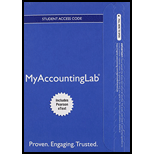
Purchases Journal: A Purchases Journal is a special journal that records all the credit purchases made from the suppliers. It includes columns of date of transaction, invoice no., supplier name (i.e. from whom purchased), posting reference which is denoted as ‘Post. Ref.’ (that contains the account number of account found in the ledger), and separate columns for the accounts (containing debit or credit amount) that are affected by credit purchase transactions.
Four-Column Accounts: A four-column account includes columns of date, item, debit (amount) and credit (amount). It also includes posting reference (denoted as ‘Post. Ref.’) and two additional columns of debit balance and credit balance to record the balance after each
Ledger: A ledger is a book of account that is used to record transactions in particular accounts. The transactions occurring in an entity are first recorded in the journals and then they are posted to the respective ledger accounts in the particular Ledger for a particular period.
General Ledger: General Ledger is a book of account that contains five types of accounts, which are assets, liabilities, income, expenses and capital.
Accounts Payable Subsidiary Ledger: Accounts Payable Subsidiary Ledger is a book of account that contains the ledger accounts of various vendors from whom the goods or services are purchased on credit.
1.
To Compute: The total of each column of the given purchases journal.
2.
(i)
To Open: The four-column ledger accounts for Merchandise Inventory (118), Office Supplies (120), Equipment (150), and Accounts Payable (211).
(ii)
To Post: The transactions to these four-column ledger accounts from the purchases journal and using dates and posting references in the accounts.
3.
(i)
To Open: The four-column accounts in the accounts payable subsidiary ledger for Farrell Equipment, Jump Supply, and Last Tech.
(ii)
To Post: The transactions to these four-column ledger accounts from the purchases journal and using dates and posting references in the ledger accounts.
Trending nowThis is a popular solution!

Chapter 7 Solutions
MyLab Accounting with Pearson eText -- Access Card -- for Horngren's Accounting, The Financial Chapters (My Accounting Lab)
- The actual cost of direct labor per hour is $16.25 and the standard cost of direct labor per hour is $15.00. The direct labor hours allowed per finished unit is 0.60 hours. During the current period, 4,500 units of finished goods were produced using 2,900 direct labor hours. How much is the direct labor rate variance? A. $3,625 favorable B. $3,625 unfavorable C. $4,350 favorable D. $4,350 unfavorablearrow_forwardOn January 1 of the current year, Piper Company issues a 4-year, non-interest-bearing note with a face value of $8,000 and receives $4,952 in exchange. The recording of the issuance of the note includes a: a. credit to Notes Payable for $4,952. b. credit to Discount on Notes Payable for $3,048. c. debit to Discount on Notes Payable for $3,048. d. debit to Cash for $8,000.arrow_forwardPLease helparrow_forward
- What is the budgeted total cost of direct materials purchases?arrow_forwardHy expert provide answer with calculationarrow_forwardDuring September, the assembly department completed 10,500 units of a product that had a standard materials cost of 3.0 square feet per unit at $2.40 per square foot. The actual materials purchased consisted of 22,000 square feet at $2.60 per square foot, for a total cost of $57,200. The actual material used during this period was 25,500 square feet. Compute the materials price variance and materials usage variance.arrow_forward
- Bluesy Electronics recorded the following financial data: Net Sales $720,500 Average Inventory at Cost = $80,200 Gross Margin Percentage = 42% Calculate the GMROI.arrow_forwardNeed help this question solutionarrow_forwardXYZ Company has a gross profit margin of 0.30, an operating profit margin of 18%, a total asset turnover ratio of 2.0x, and cost of goods sold of $700,000. The company's tax rate is 35%, and it has no debt. Calculate XYZ Company's Return on Assets (ROA).arrow_forward

 AccountingAccountingISBN:9781337272094Author:WARREN, Carl S., Reeve, James M., Duchac, Jonathan E.Publisher:Cengage Learning,
AccountingAccountingISBN:9781337272094Author:WARREN, Carl S., Reeve, James M., Duchac, Jonathan E.Publisher:Cengage Learning, Accounting Information SystemsAccountingISBN:9781337619202Author:Hall, James A.Publisher:Cengage Learning,
Accounting Information SystemsAccountingISBN:9781337619202Author:Hall, James A.Publisher:Cengage Learning, Horngren's Cost Accounting: A Managerial Emphasis...AccountingISBN:9780134475585Author:Srikant M. Datar, Madhav V. RajanPublisher:PEARSON
Horngren's Cost Accounting: A Managerial Emphasis...AccountingISBN:9780134475585Author:Srikant M. Datar, Madhav V. RajanPublisher:PEARSON Intermediate AccountingAccountingISBN:9781259722660Author:J. David Spiceland, Mark W. Nelson, Wayne M ThomasPublisher:McGraw-Hill Education
Intermediate AccountingAccountingISBN:9781259722660Author:J. David Spiceland, Mark W. Nelson, Wayne M ThomasPublisher:McGraw-Hill Education Financial and Managerial AccountingAccountingISBN:9781259726705Author:John J Wild, Ken W. Shaw, Barbara Chiappetta Fundamental Accounting PrinciplesPublisher:McGraw-Hill Education
Financial and Managerial AccountingAccountingISBN:9781259726705Author:John J Wild, Ken W. Shaw, Barbara Chiappetta Fundamental Accounting PrinciplesPublisher:McGraw-Hill Education





